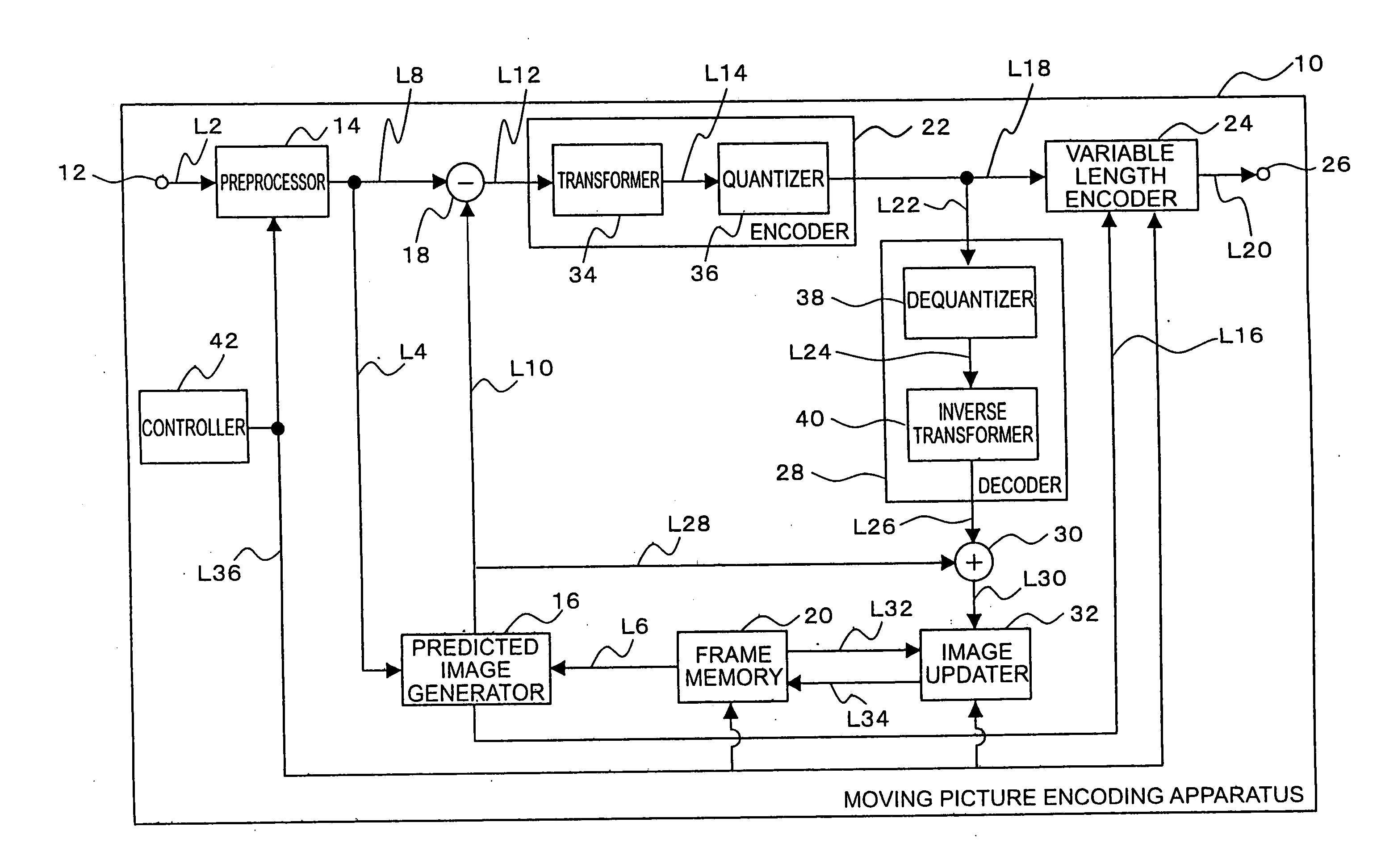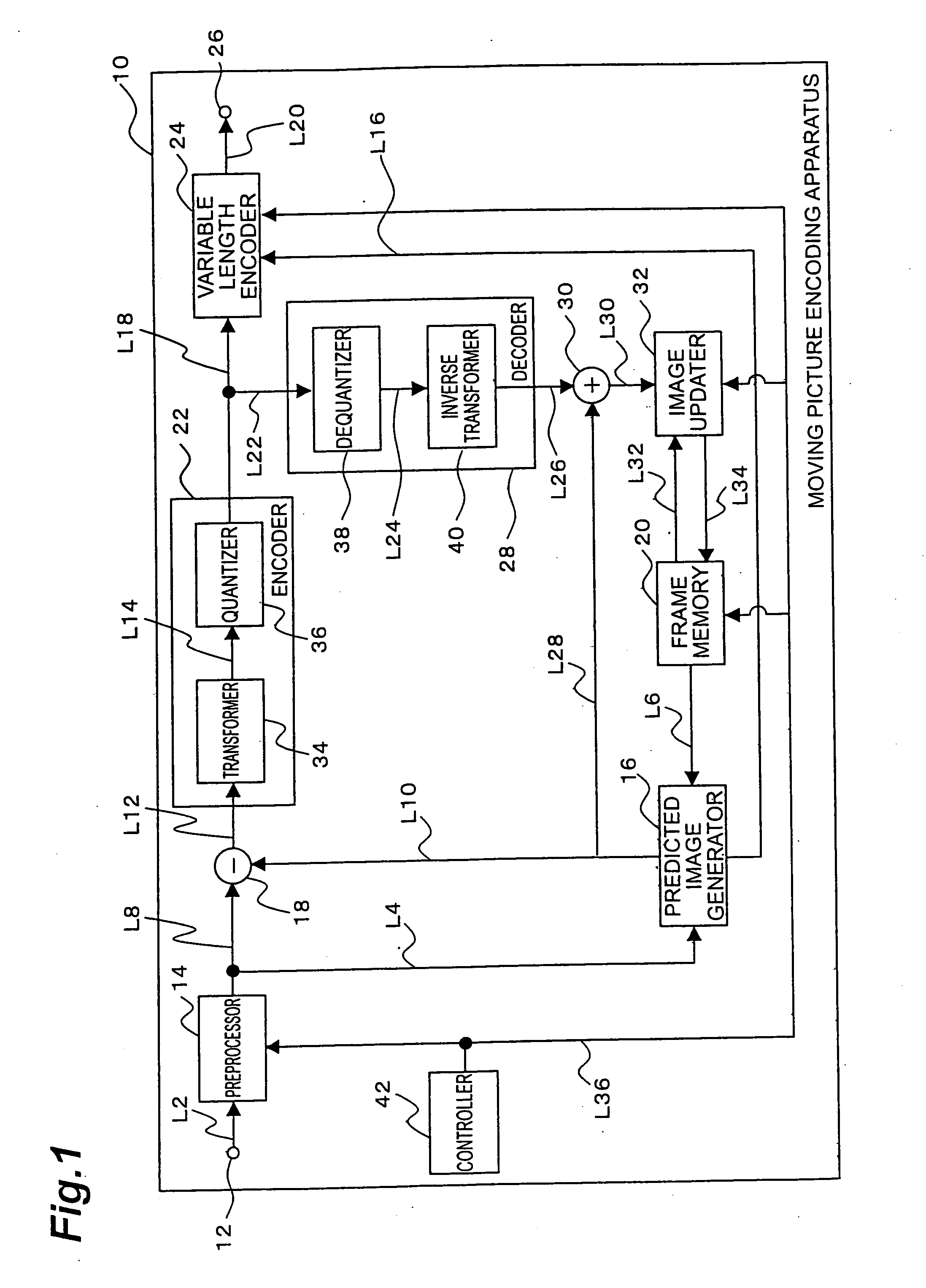Moving picture encoding apparatus, moving picture encoding method, moving picture encoding program, moving picture decoding apparatus, moving picture decoding method, and moving picture decoding program
a technology of moving pictures and encoding methods, applied in the direction of color televisions with bandwidth reduction, instruments, television systems, etc., can solve the problems of reducing the quality of reference images and failure to reduce data volumes in sufficient ways, so as to reduce the noise of moving pictures, improve encoding efficiency, and reduce the data volume of moving pictures
- Summary
- Abstract
- Description
- Claims
- Application Information
AI Technical Summary
Benefits of technology
Problems solved by technology
Method used
Image
Examples
Embodiment Construction
[0054] The preferred embodiments of the present invention will be described below in detail with reference to the drawings. Identical or equivalent portions will be denoted by the same reference symbols in each of the drawings.
[0055]FIG. 1 is an illustration showing a configuration of a moving picture encoding apparatus according to an embodiment of the present invention. The moving picture encoding apparatus 10 shown in FIG. 1 can be physically composed of a computer comprising a CPU (central processing unit), a storage device such as a memory, a display unit, a communication device, and so on. The moving picture encoding apparatus 10 may be a mobile telecommunications terminal such as a cell phone. Namely, a variety of information processing equipment can be applied to the moving picture encoding apparatus 10.
[0056] As shown in FIG. 1, the moving picture encoding apparatus 10 is functionally composed of an input terminal 12, a preprocessor 14, a predicted image generator (predic...
PUM
 Login to View More
Login to View More Abstract
Description
Claims
Application Information
 Login to View More
Login to View More - R&D
- Intellectual Property
- Life Sciences
- Materials
- Tech Scout
- Unparalleled Data Quality
- Higher Quality Content
- 60% Fewer Hallucinations
Browse by: Latest US Patents, China's latest patents, Technical Efficacy Thesaurus, Application Domain, Technology Topic, Popular Technical Reports.
© 2025 PatSnap. All rights reserved.Legal|Privacy policy|Modern Slavery Act Transparency Statement|Sitemap|About US| Contact US: help@patsnap.com



